Arroz con Gandules, a vibrant dish bursting with flavor, stands as a beloved treasure in many kitchens. This culinary gem, often simmered to perfection at family gatherings, carries the warmth of tradition in every grain. But as times change, so do our cooking methods.
In this post, we’ll unwrap the secrets behind the classic techniques of Traditional vs Modern Cooking Methods for Arroz con Gandules that have been passed down through generations and compare them with the sleek, time-saving approaches of today’s modern cookery. Whether you’re a seasoned chef or a curious foodie, join us on a flavorful journey as we explore the best ways to prepare this iconic dish.
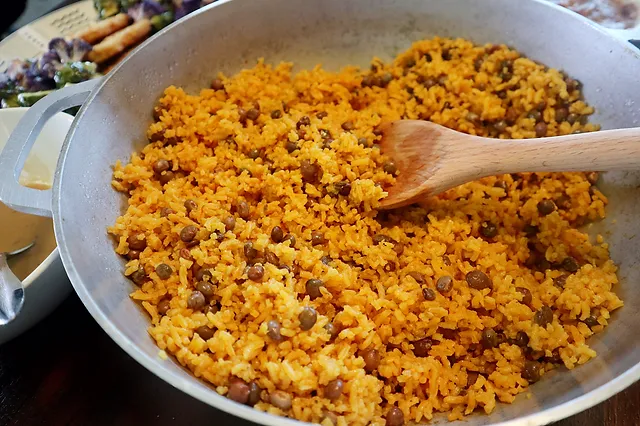
Traditional Cooking Methods
The Roots of Tradition
Long before our kitchens had electric gadgets, people in Puerto Rico created delicious meals using simple tools and the power of fire. One of these cherished dishes is Arroz con Gandules. It’s a mix of rice, pigeon peas, and a blend of tasty herbs and spices.
Step-by-Step: The Old-School Way
To make Arroz con Gandules the traditional way, you need patience and love. Here’s how it’s done:
Gathering the Goodness:
Start by collecting all your ingredients. You’ll need rice, pigeon peas, and a special mix called sofrito. Sofrito is made by blending onions, garlic, bell peppers, and cilantro. It gives the dish its unique flavor.
The Cooking Dance:
In a large pot, called a caldera, heat some oil over a wood fire or a gas stove. Add chunks of pork or ham if you like. Once they’re golden brown, stir in the sofrito.
Spice It Up:
Next, sprinkle in some sazón and adobo. These are seasoning blends that make the dish colorful and flavorful.
Peas and Rice:
Add the pigeon peas to the pot. Then, pour in the rice and enough water to cover everything. Stir it all together gently.
The Magic Touch:
Cover the pot with a tight lid. Let the rice cook slowly. This is when the flavors really come together.
Finishing Strong:
After about 20 minutes, check the rice. It should be tender and full of flavor. If it’s ready, fluff it with a fork to let out the steam.
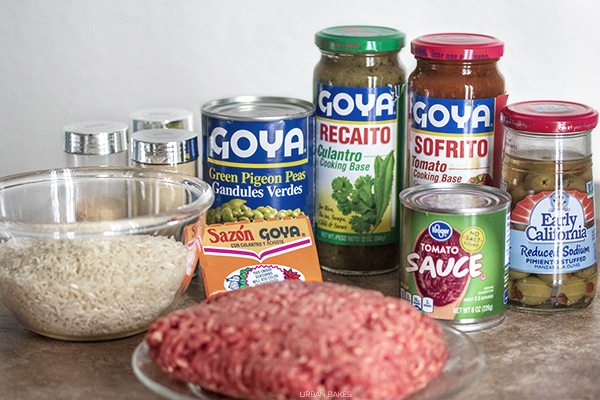
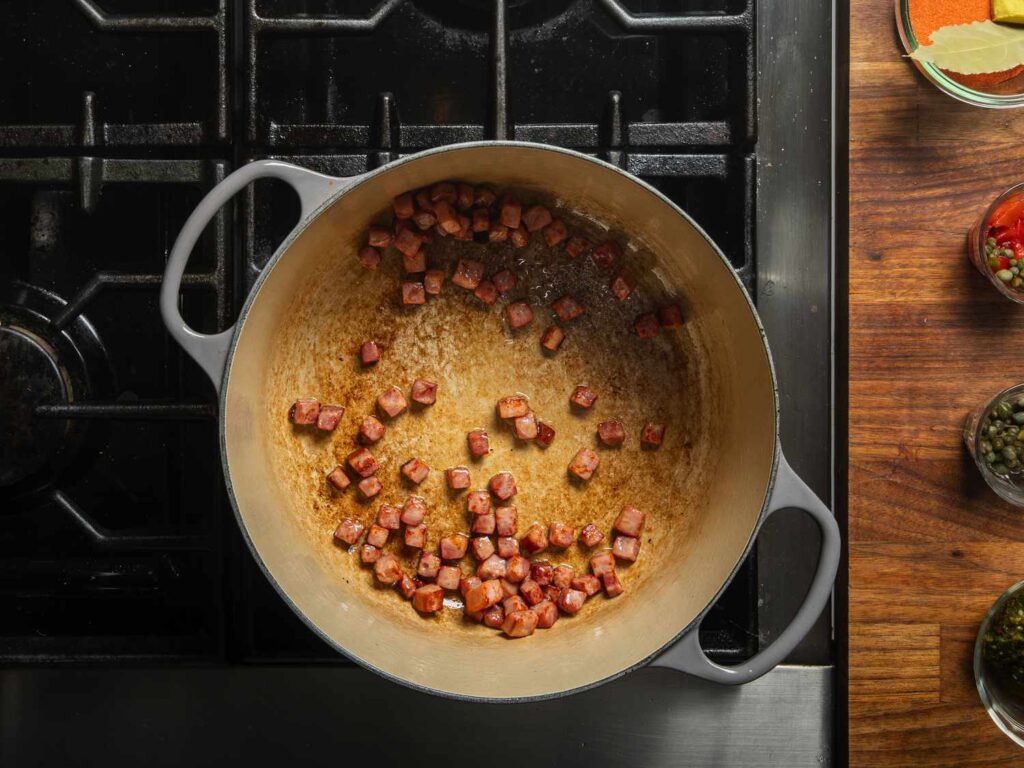
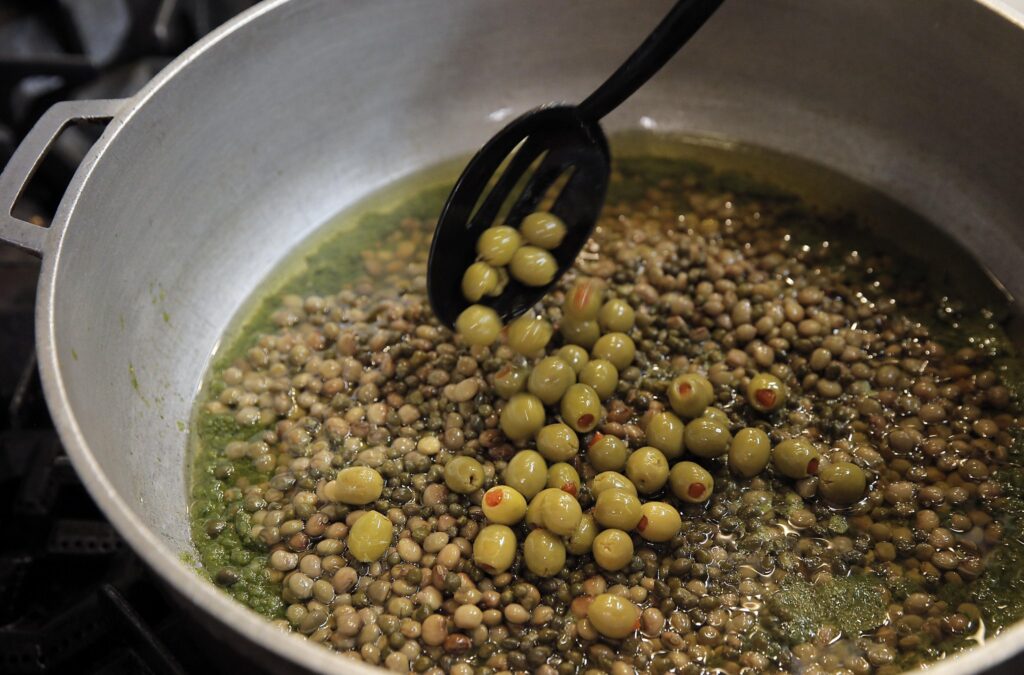
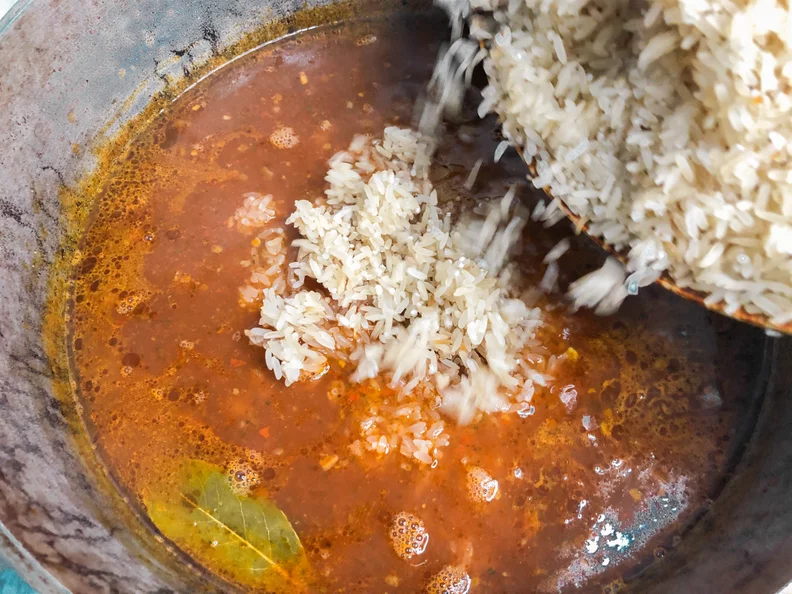
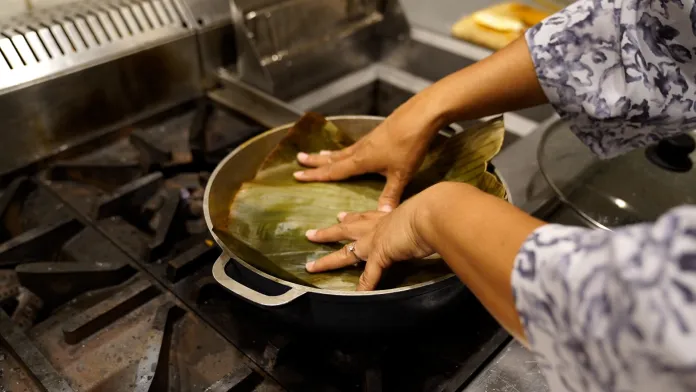
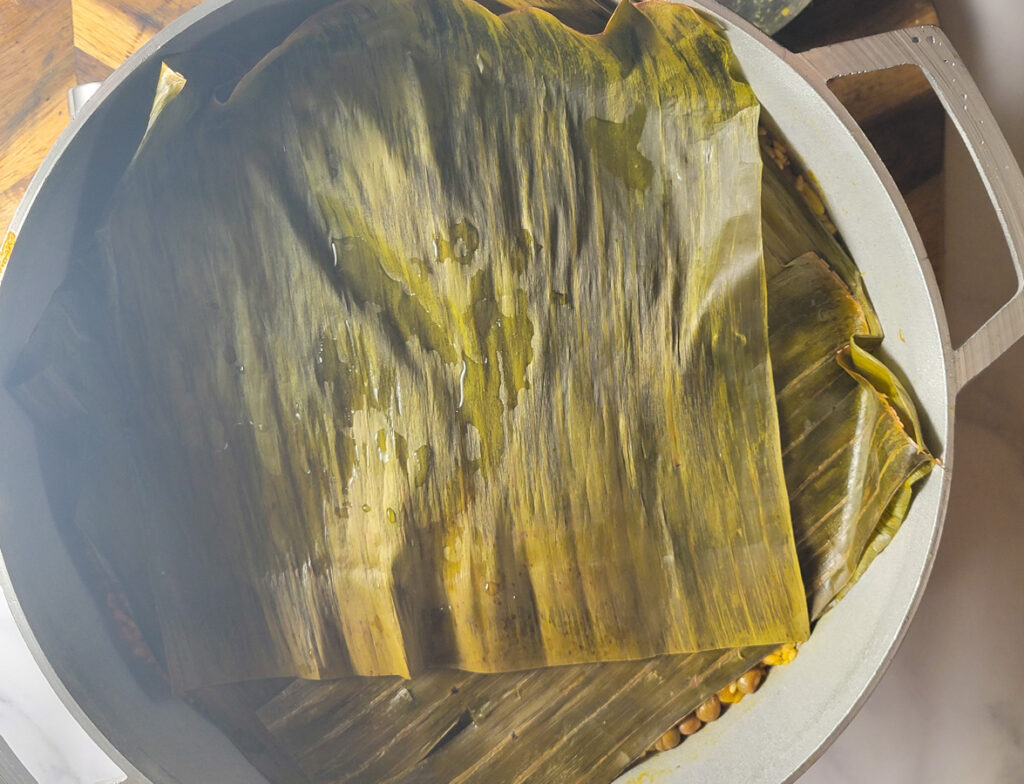
Tools of the Trade
In the past, people didn’t have fancy kitchen tools. They used what they had. For Arroz con Gandules, the most important tool is the caldera. It’s a pot made of aluminum or cast iron. It cooks the rice just right and even makes the bottom layer crispy and delicious.
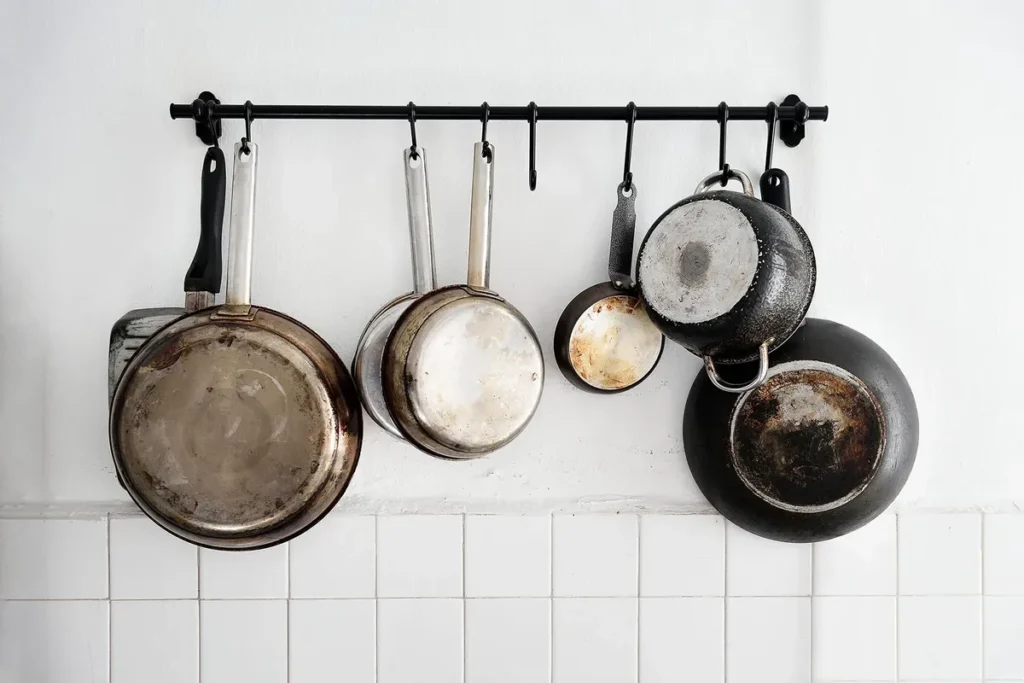
Why Tradition Matters
Cooking Arroz con Gandules the traditional way is about more than just food. It’s about keeping history alive. Every time someone cooks this dish, they’re honoring the past and sharing a piece of their culture.
Modern Cooking Methods
Embracing the New
In today’s fast-paced world, cooking has become quicker and easier thanks to modern appliances. Even traditional dishes like Arroz con Gandules have adapted to these changes.

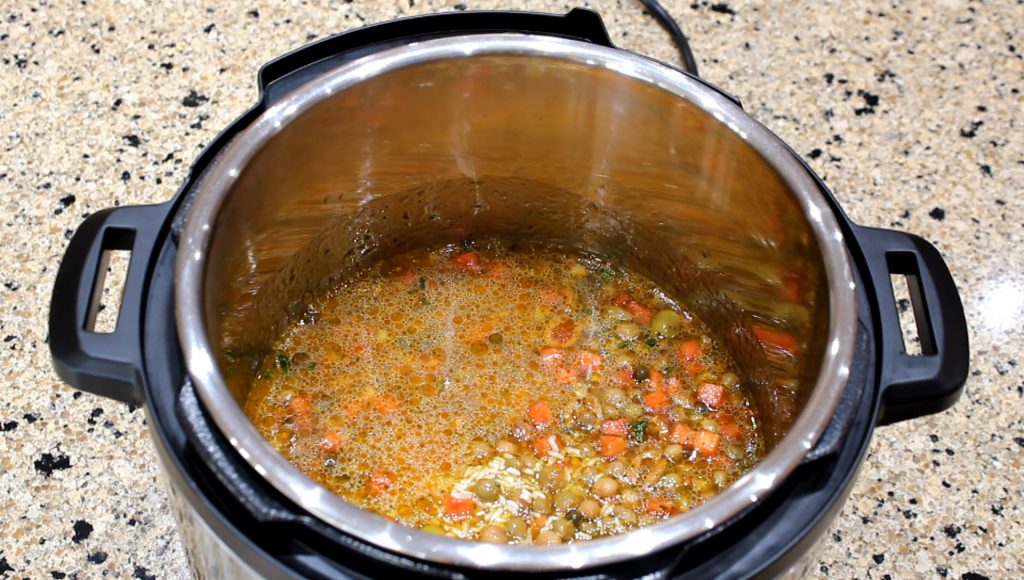
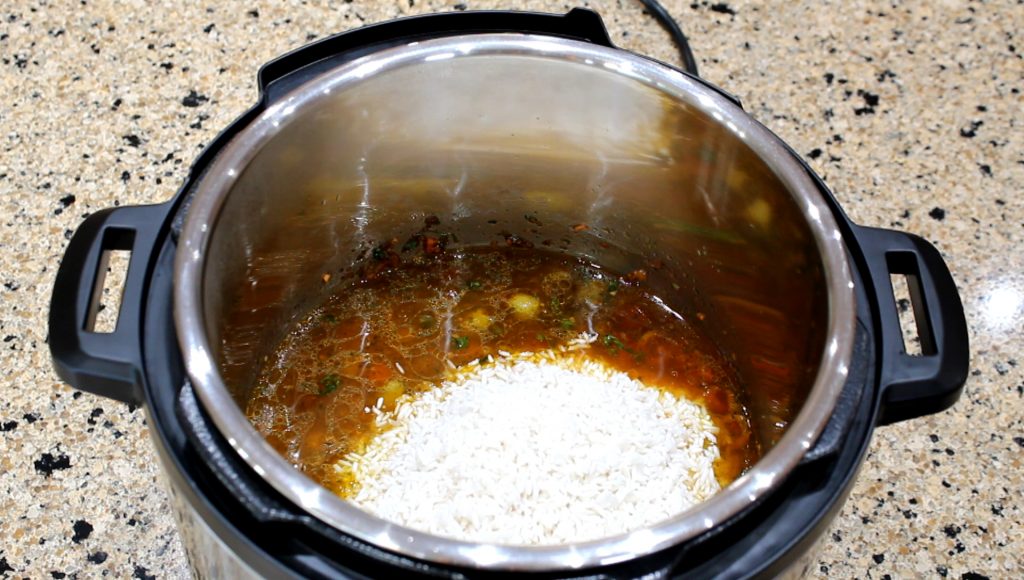
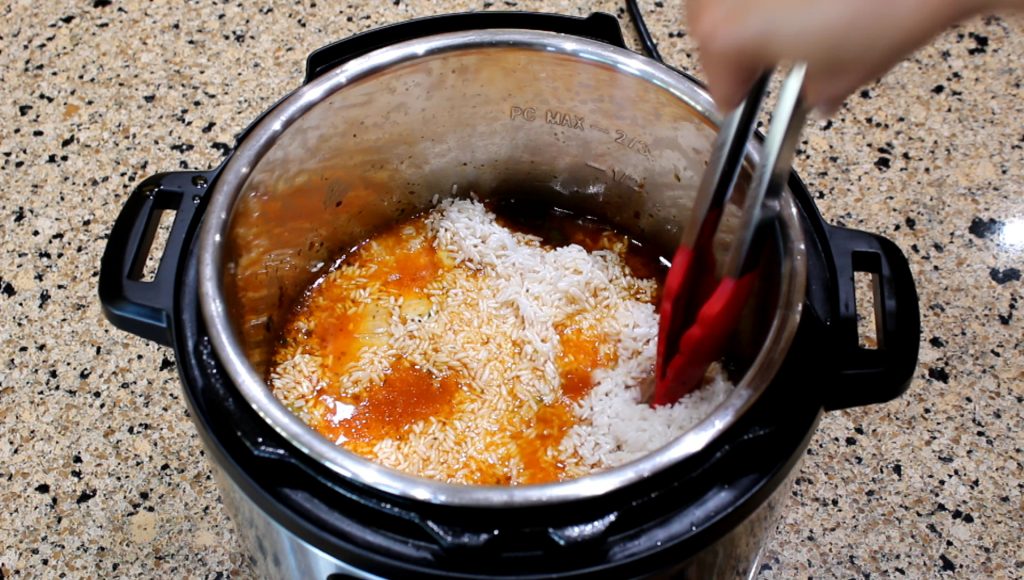
Step-by-Step: The Contemporary Approach
Here’s how you can whip up Arroz con Gandules using modern kitchen tools:
- Prep with Power: Use a food processor to make the sofrito quickly. Just toss in onions, garlic, bell peppers, and cilantro, then blend until smooth.
- Sizzle and Simmer: Heat oil in an electric pressure cooker set to sauté mode. Add your sofrito and let it sizzle. Then, throw in any meat you’re using, like diced ham or bacon.
- Season and Stir: Sprinkle in your seasonings—sazón, adobo, and a pinch of salt. Stir in the rice, pigeon peas, and water.
- Pressure Cook Perfection: Seal the lid, set the cooker to high pressure, and let it work its magic for about 15 minutes. The pressure cooker locks in flavor and cooks everything evenly.
- Quick Release, Quick Serve: Once the cooking time is up, use the quick release function to let out the steam. Open the lid, fluff the rice, and it’s ready to enjoy!
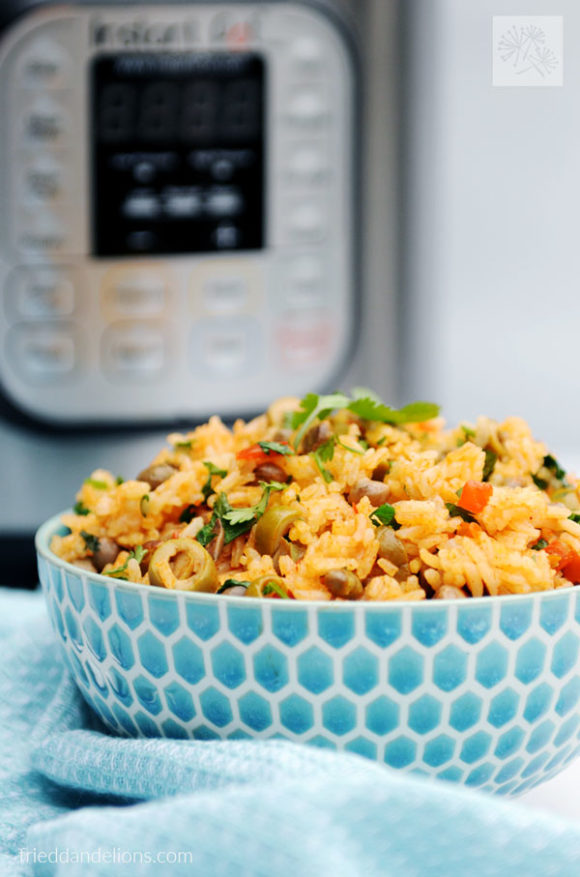
Modern Tools for Modern Times
The electric pressure cooker is the star of the modern kitchen. It’s like a magic pot that can do the job of several appliances all at once. It’s perfect for making Arroz con Gandules because it’s fast, it’s easy, and it keeps all the flavors locked in.
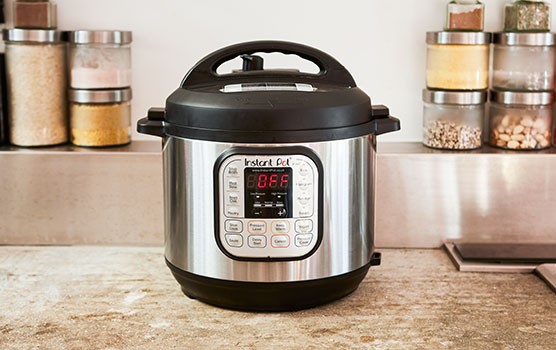
Why Go Modern?
Cooking with modern tools can save you time and energy. It’s great for busy days when you still want a home-cooked meal. Plus, it’s a fun way to blend the old with the new and keep traditions alive in a modern world.
Comparing Flavors and Textures
The Taste of Tradition
When you cook Arroz con Gandules the old-fashioned way, it’s like taking a bite of history. The traditional method uses a sofrito base, which is a sauce made from tomatoes, onions, peppers, and herbs, all cooked slowly to bring out their natural sweetness. This slow cooking creates deep, rich flavors that you can’t rush. The rice absorbs the sofrito, along with spices like cumin and a hint of caramelized onion, giving it a taste that’s both earthy and bright.
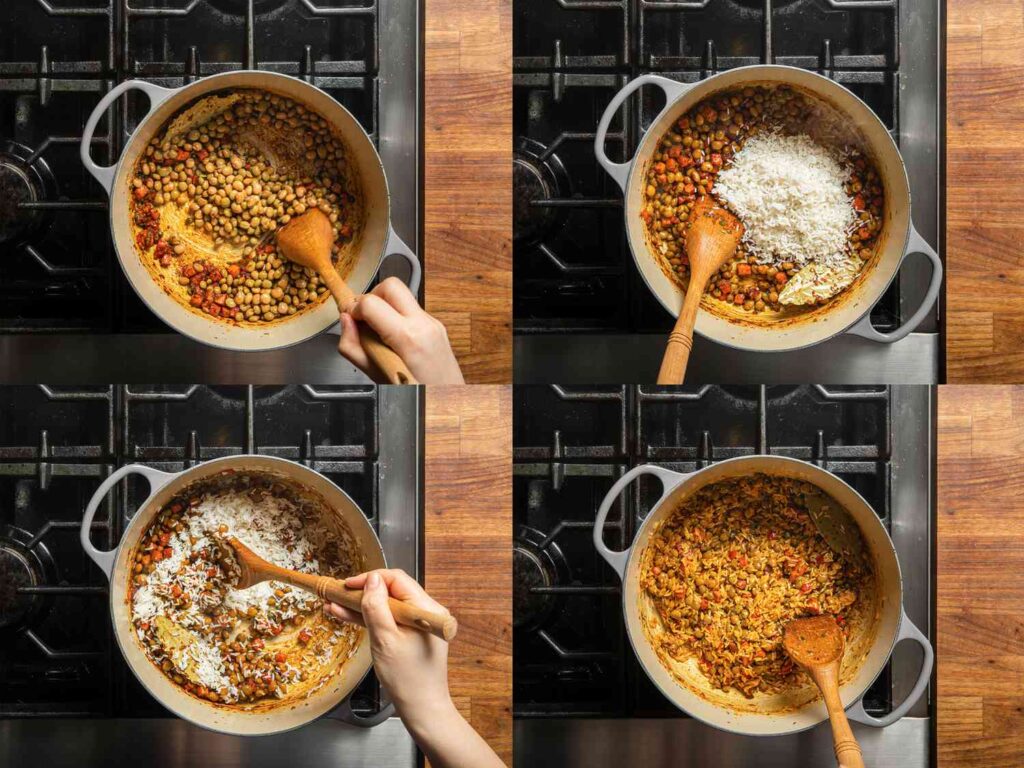
The Texture That Tells a Story
The texture of traditionally cooked Arroz con Gandules is unique. The rice is tender, but each grain stands on its own. If you’re lucky, you’ll get a scoop of the crispy bottom layer of rice, known as “pegao.” It’s a crunchy treat that’s highly prized and comes from cooking the rice just right in a caldero.
Modern Methods, Modern Tastes
Switching to modern cooking, the flavors are a bit different. Using an electric pressure cooker, the sofrito still forms the foundation, but the spices blend more quickly into the rice. The result? A dish that’s full of flavor, but with a lighter, more uniform taste. You won’t find the “pegao” here, but you’ll get a fluffy, evenly cooked rice that’s still delicious.
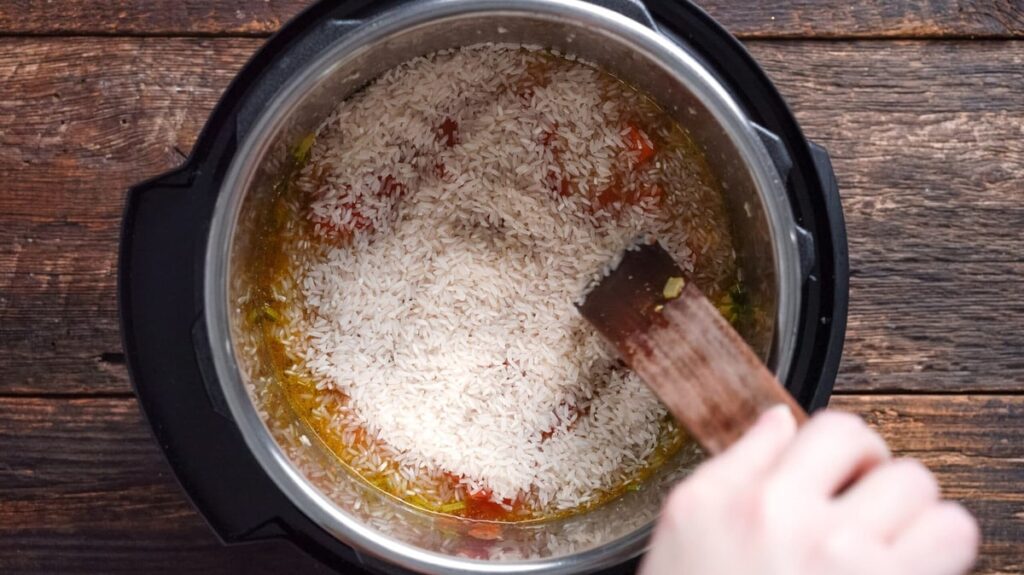
Texture Made Easy
Modern appliances like pressure cookers make cooking rice a breeze. The texture is consistent—no more worrying about parts being too hard or too mushy. Every bite is soft and perfect. And because it’s all done in one pot, the rice cooks evenly, giving you a reliable texture every time.
The Best of Both Worlds
Whether you choose the traditional method or the modern way, Arroz con Gandules is a dish that’s all about flavor and texture. The traditional method takes more time and attention, but it rewards you with complex flavors and a variety of textures. The modern method is quicker and gives you great flavor with a soft, even texture. No matter how you cook it, this dish is a celebration of culture and taste.
Nutritional Comparison
Goodness in Every Bite
Arroz con Gandules isn’t just tasty; it’s packed with nutrients that are good for you. Whether you cook it the traditional way or use modern methods, the dish brings a bunch of healthy stuff to your plate.
What’s Inside?
- Pigeon Peas: These little peas are a powerhouse of nutrition. They’re full of protein, which helps build strong muscles, and fiber, which keeps your tummy happy.
- Rice: It gives you the energy to run, play, and think. Plus, it’s got some vitamins and minerals, too.
- Sofrito: This sauce is made with veggies like tomatoes, onions, and peppers. These vegetables are all about vitamins and making sure your body works properly.

- Traditional Touch Cooking Arroz con Gandules the old way means taking it slow. The sofrito simmers and blends with the rice, keeping all the vitamins in place. And because you’re using whole, fresh ingredients, you’re getting all the natural goodness.
- Modern Magic When you use a pressure cooker, it cooks everything super fast. That’s great for saving time, but it can also mean that some of the vitamins stay in the food better because they don’t get cooked away.
- Balance is Key No matter how you cook it, Arroz con Gandules can be part of a balanced meal. Add some veggies on the side and maybe a piece of fruit for dessert, and you’ve got a plate full of colors and nutrients.
- The Bottom Line Both traditional and modern cooking methods have their perks. Traditional might give you richer flavors, while modern can be quicker and keep more vitamins in your food. The best part? You get to choose how to make your Arroz con Gandules delicious and nutritious.
Cooking Methods for Arroz con Gandules: Time and Convenience
- Quick and Easy or Slow and Steady? When it comes to cooking, we all have the same question: How long will it take? With Arroz con Gandules, the answer depends on how you choose to cook it.
- Traditional Takes Time The traditional way of making Arroz con Gandules is like a slow dance. It takes time and care. You start by making the sofrito, which is a mix of chopped veggies cooked in oil until they’re just right. Then, add the rice and peas and let everything simmer slowly. This method can take about an hour, but it’s worth it for the flavors.
- Modern Means Fast Modern cooking methods speed things up. If you use a pressure cooker, you can have your Arroz con Gandules ready in about half the time. Just put all your ingredients in, set the timer, and before you know it, dinner’s on the table.
- The Best Part? Both Taste Great! Whether you go traditional and take your time or modern and make it fast, Arroz con Gandules always turns out tasty. The choice is yours, depending on how much time you have and what you feel like doing.
If you’ve got the time and want to enjoy the process, go traditional. If you’re in a hurry, the modern way will get you eating in no time. Either way, you’ll end up with a delicious dish that everyone will love.
Preserving Tradition in the Modern Kitchen
Keeping the Past Alive
Even with all the fancy gadgets we have today, it’s important to remember where we came from. Cooking traditional dishes like Arroz con Gandules is a way to do just that.
Mixing Old and New
You don’t have to choose between traditional and modern. You can use both! Here’s how:
- Start with Sofrito: Make your sofrito the old-fashioned way, chopping up the veggies by hand. It’s a bit of work, but it’s how it’s been done for years.
- Use a Caldero: If you have one, cook your rice in a caldero. It’s a traditional pot that gives Arroz con Gandules its special taste.
- Add Modern Twists: While keeping some old methods, don’t be afraid to use a rice cooker or pressure cooker to finish the cooking. It saves time and keeps the flavors.
When you cook Arroz con Gandules like your grandparents might have, you’re keeping your family’s stories and traditions alive. It’s a way to honor them and share their legacy with others.
Tips for Tradition
- Talk About It: As you cook, tell your family about the traditional ways. Share stories you know about the dish.
- Involve Everyone: Get your friends or kids to help. They can learn and carry on the tradition.
- Keep It Simple: You don’t need to do everything the old way. Just a few touches can make it special.
Final Analysis
Whether it’s the rich, layered flavors of the traditional method or the quick, consistent taste of the modern way, Arroz con Gandules always brings a bit of joy to the table. It’s a dish that’s full of history and heart.
No matter how you make it, Arroz con Gandules is a dish that everyone can enjoy. It’s perfect for a big family dinner or a quiet meal at home. And it’s a great way to share a piece of culture with friends.
So, keep cooking, and keep sharing these delicious flavors with the people you love. Whether you stick to the old ways or embrace the new, Arroz con Gandules will always be a dish to bring us together.
Disclosure: Our blog contains affiliate links to products. We may receive a commission for purchases made through these links. However, this does not impact our reviews and comparisons. We try our best to keep things fair and balanced, in order to help you make the best choice for you.

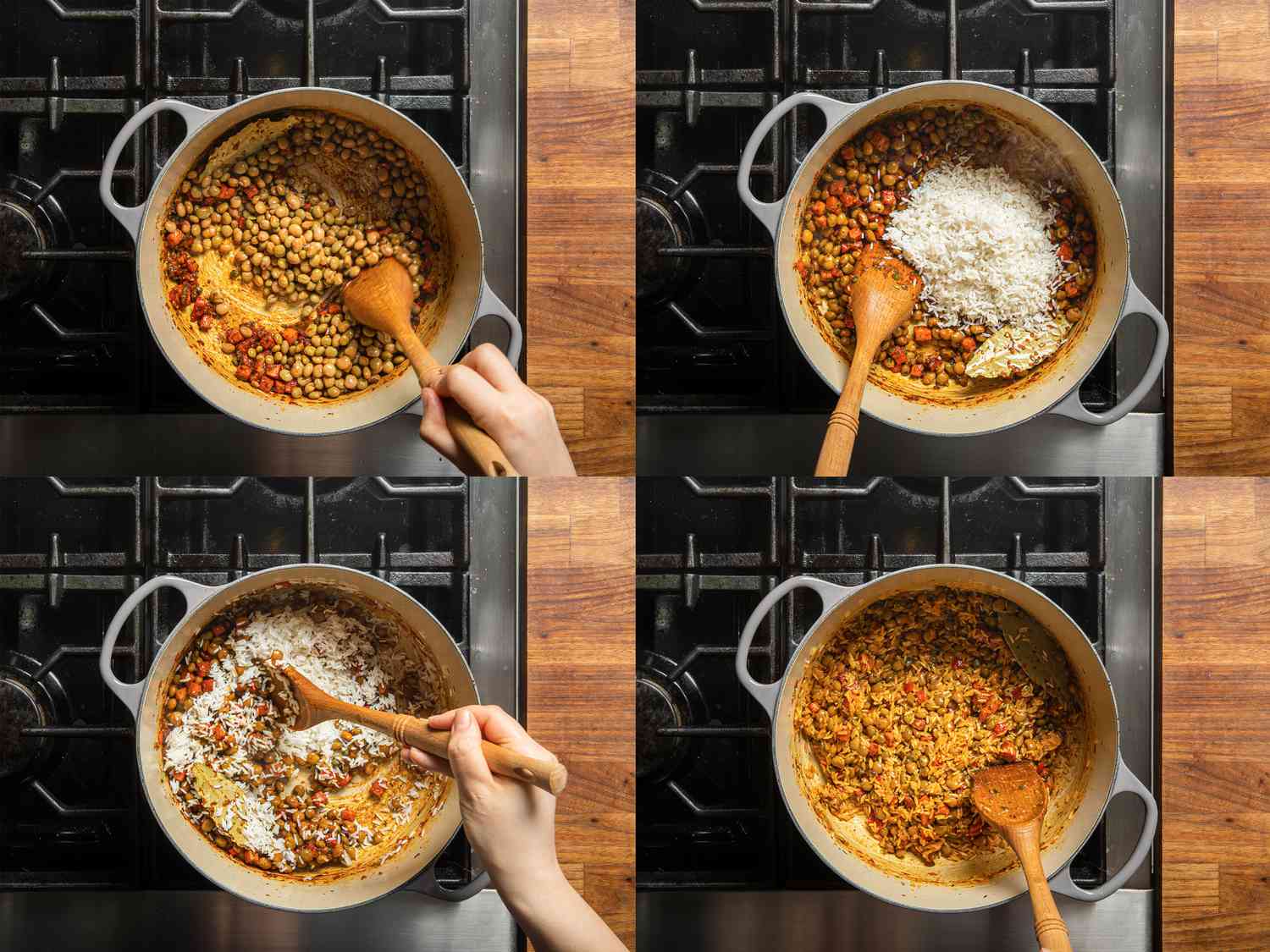

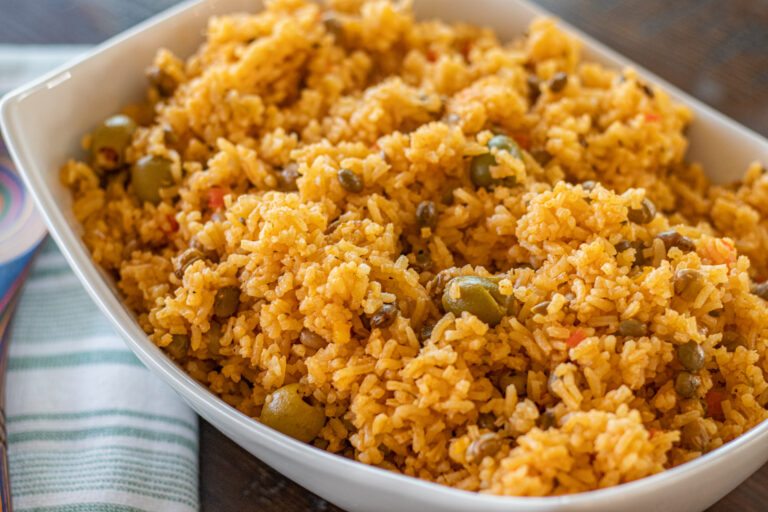
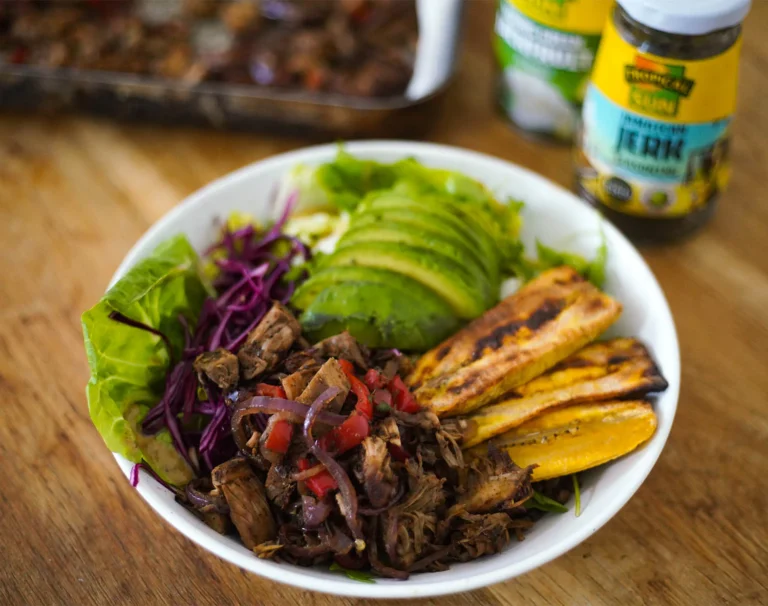
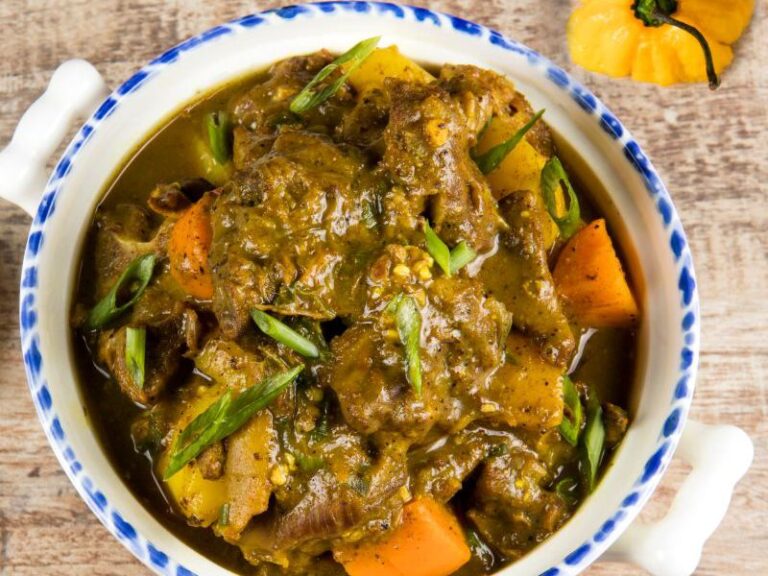


2 Comments